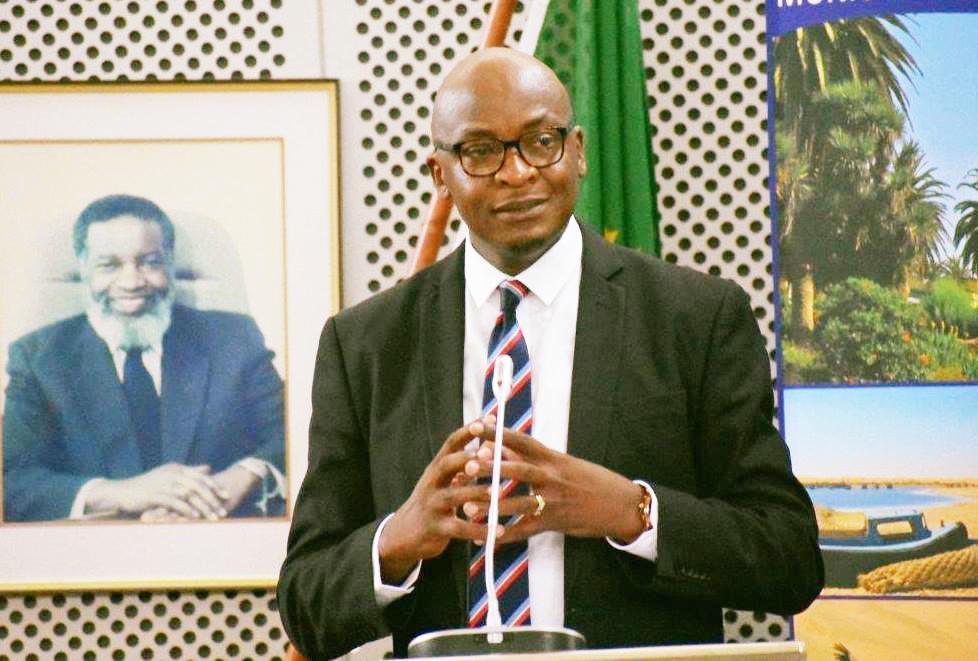Africa-Press – Namibia. Swakopmund has taken a unique route to boost the town’s economic and development agenda, especially in areas such as medical, sport, tourism and educational institutions, making it a town of choice.
New Era journalist Eveline de Klerk (NE) sat down with CEO Alfeus Benjamin (AB) to talk about the transformation of Swakopmund as well as how council and administration share a joint passion to put the town first.
NE: Operations at Swakopmund seem to be smooth sailing, what’s the secret behind this synergy?
AB: Yes, Swakopmund is a bit unique. Historically, this town has had a tradition of good planning, consistent implementation and a development-focused approach. Over the past six to seven years, what I’ve experienced is a deliberate effort to clarify our long-term goals, asking ourselves what Swakopmund should look like 25 to 50 years from now.
We developed a structure plan as a development guideline for the next 25 years. We want to turn Swakopmund into a smart city. To achieve that, we focus on five development pillars: tourism, tertiary education and quality education, industrialisation and manufacturing, and agriculture.
NE: Tell us more about the smart city concept.
AB: We’ve been implementing smart city initiatives to offer services in a faster, more affordable way. After the last elections, councillors sat down and drafted a 15-point priority plan. This plan includes land availability, housing and attracting investors in key sectors. These 15 points then guided our strategic plan, which is clear and practical.
For example, under the education pillar, we decided to advertise institutional land and invite proposals. That’s how IUM and other institutions came on board. For our green city initiative, we focused on expanding green spaces. Previously, green areas were mostly on the western side of town. Now, we’re developing green areas across the eastern side as well. Meaning even DRC has sport facilities.
NE: Let’s talk about political maturity in council. Is that playing a role in your progress?
AB: Political maturity is critical. Since 2018, we’ve had councillors who served in previous councils bringing in their experience, as well as new councillors who are professionals. This diversity brings valuable insights and professionalism.
My job is to consolidate ideas from councillors, staff and myself, and align them with our priorities. I see myself as a vision protector, responsible for translating these ideas into actions—through council resolutions, implementation and procurement.
We’ve also structured our internal systems to build consensus. For instance, all councillors attend our meetings, even if they aren’t voting members. They can still participate and raise their views. By the time a matter reaches council, we’ve usually already achieved 95% consensus. That’s why most of our council meetings last less than an hour. Some even say we’re boring—but that’s simply the result of consensus-driven governance.
NE: How do you manage that relationship between administration and council?
AB: Each person has a clear role. Councillors serve as the interface between us and the community and various stakeholders. Whatever they bring to the table is considered collectively. Once a decision is made, it becomes binding for all of us—even those who may have disagreed initially—unless a motion is brought back for reconsideration, this however, rarely happens.
Development remains our focus. When we submit items to the council, 95% of those get approved because they align with our shared vision. Only a few might be sent back for clarity.
NE: What does your administrative structure look like behind the scenes?
AB: Every Monday, I meet with general managers in our Exco meetings to discuss service delivery. Every Wednesday, we hold project implementation and coordination meetings. During these meetings, general managers give feedback, highlight bottlenecks and we track progress. Minutes from these meetings are shared with our councillors. Nothing is hidden. That way, if a councillor is asked something by a resident, they are already informed and don’t need to call me.
We also use WhatsApp groups extensively—for councillors, administration, cleaning teams, and more. Staff can take photos of issues and send them to the relevant group for immediate attention. It’s about being responsive and efficient while rendering the services we have been entrusted with.
NE: Are there ever disagreements? And how do you deal with them?
AB: Yes, disagreements happen—but they are constructive. We don’t disagree just for the sake of it. We discuss whether a proposed method is the right one. If consensus isn’t reached, we take the matter to council, which decides. Once that decision is made, our job is to implement.
We also maintain a strong interaction with the community. Apart from structured meetings, this year we specifically focused on engaging residents of areas like Wagdaar to inform them about upcoming developments—especially those we promised during the Covid relocation phase. We also held meetings in areas like Tamariskia, which are more service-focused.
Every year, we host public engagements and business forums to provide updates on what’s happening, and what we’re planning. Everyone is kept in the loop.
NE: Let’s talk about community support. Swakopmund residents don’t complain much, especially about paying municipal bills. You also seem to avoid using debt collectors. Why is that?
AB: That’s correct. There’s no real secret. It’s just a shared spirit—a desire to see improvement in people’s lives. Everyone, from councillors to staff, comes to work with that in mind. Our residents are dedicated. They understand the value of service delivery, and that helps keep the system running smoothly.
Because there’s trust and transparency, people are more willing to cooperate and do their part, including paying their bills.
We also keep tabs on our residents. Those who struggle to pay are always welcome to come in and make arrangement. Debt collection is really the last step.
For More News And Analysis About Namibia Follow Africa-Press






